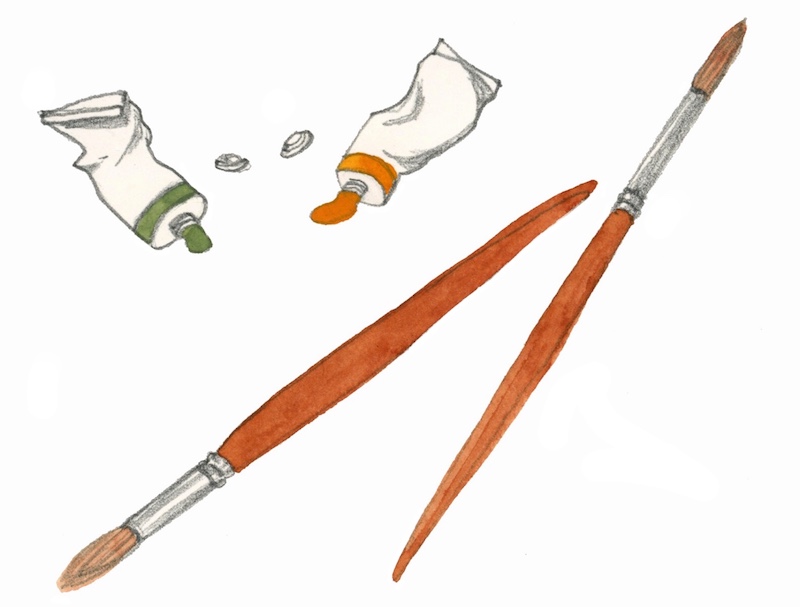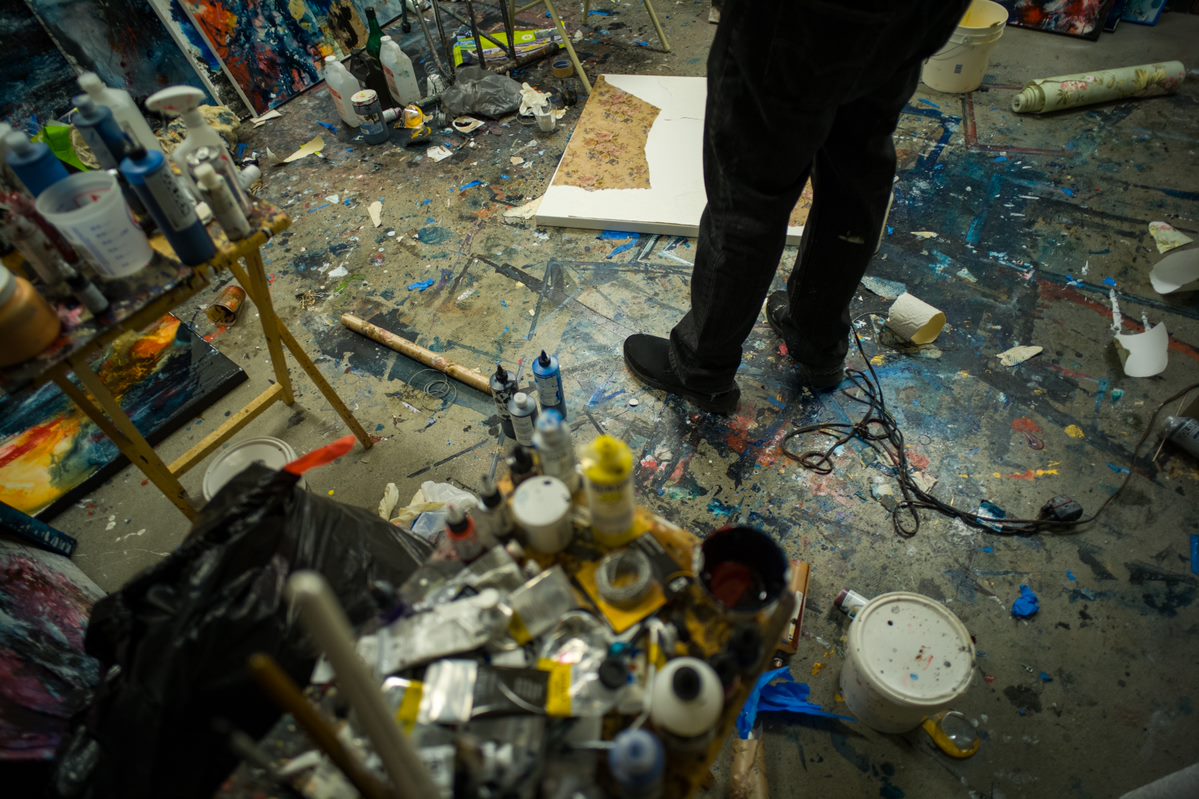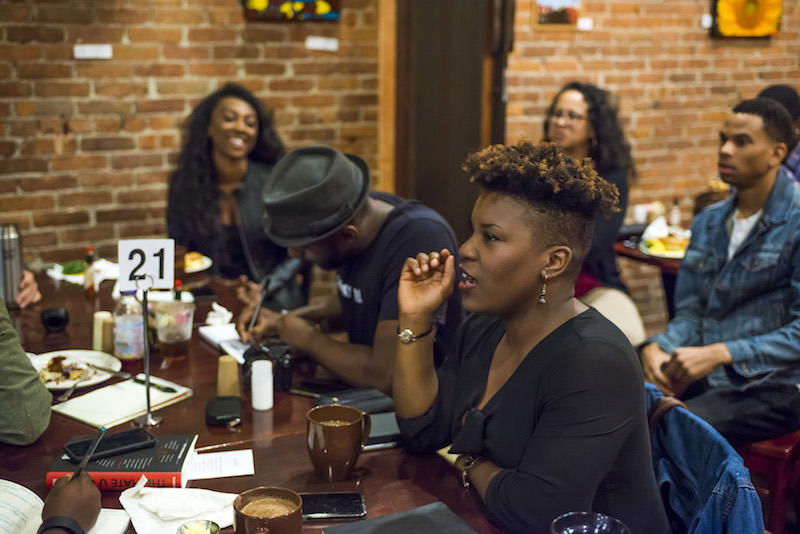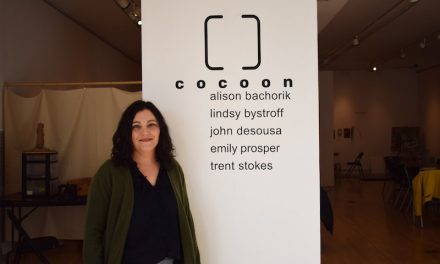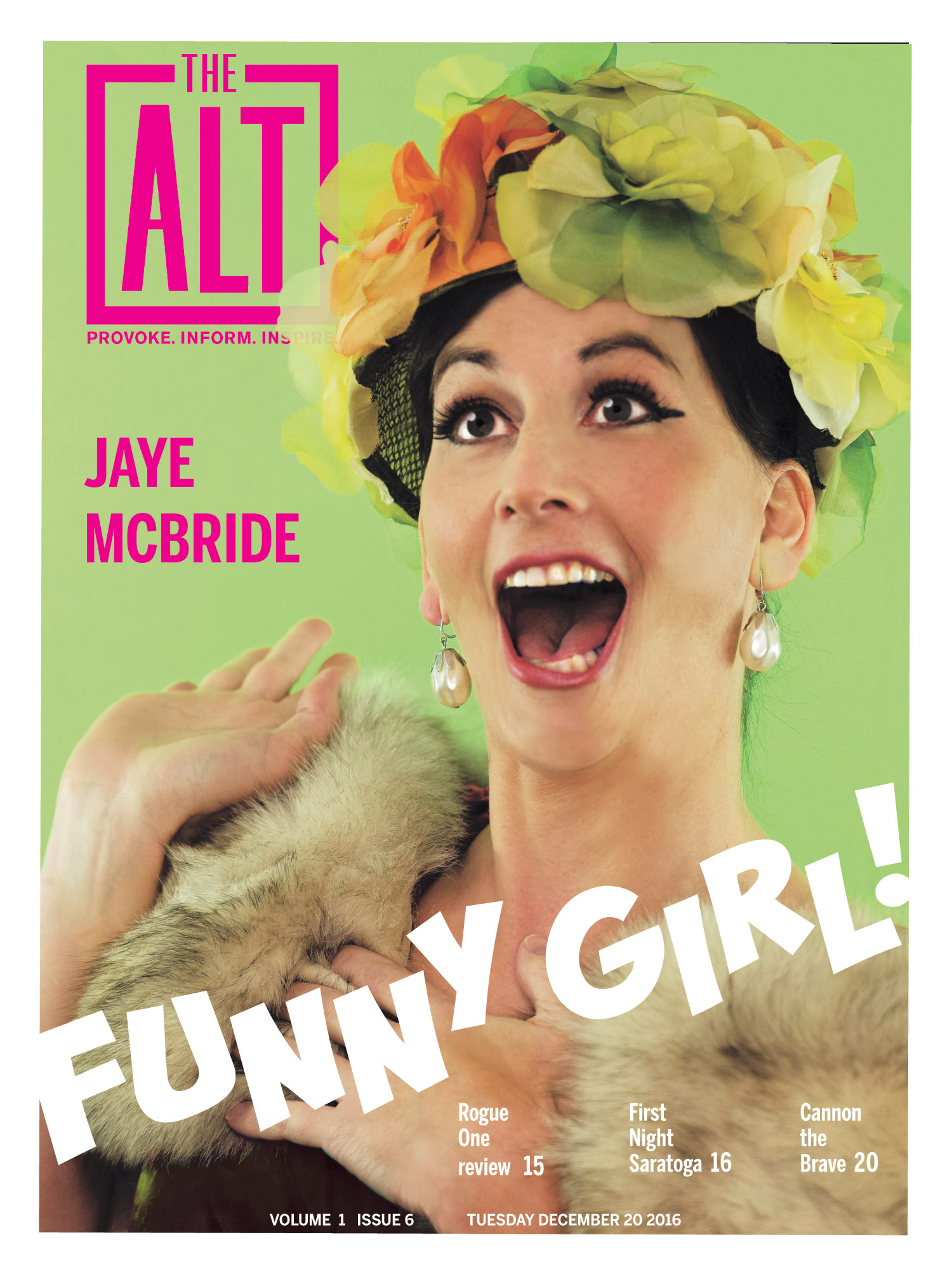Art: Cara Hanley
Ah, the arts. Sometimes they feel untouchable. Stark white walls in a gallery where—as so many sitcoms depicting our brave character on a date with an unattainable intellectual being fed art history facts through an earpiece have taught us—you have to have something profound to say in order to be involved. Hello! This is The Collaborative here to say please throw that stereotype in the trash.
This region is full of artists. They’re chalking the sidewalks, painting 787, muraling alleyways and smattering our coffee shops and holding pop-up workshops and shoots everywhere we look.
While there are plenty of opportunities to follow the works of those who interest you on social media or market sites such as Instagram and Etsy, there are curators all over the region looking to give artists in-person opportunities to share their work with viewers and grow an audience.
FINDING A STARTING POINT
Visiting group shows and open studios are great ways to introduce yourself to a handful of regional artists at a time.
Given the amount of time, material and work that goes into individual pieces, price often is an intimidating factor for potential buyers. But artwork can be accessible depending on what you’re working with. Original pieces, limited prints and rare material are usually priced higher than prints or postcards—which, when framed and hung on a wall, pay solid tribute to the original work. And printmaking’s one-of-a-kind nature adds an element all its own.
THE CHALLENGING ENVIRONMENT OF LOCAL GALLERIES
“Something that we all deal with down here is a lack of sales and investment in artists,” says Belinda Colón of the Arts Center of the Capital Region in Troy. “You have this influx of people who are collecting, who have money from larger cities and are coming up to places like Hudson. … but this isn’t quite the place that they are coming to buy yet.”
“If you go out to Greene County, things will sell in Landscapes for Landsake, an amazing project that happens every year,” she says. “They have a lot of collectors who come to that show and it’s a great opportunity for artists, but then you’ll go to a gallery close by and nothing sells.”
Laudelina Martinez, who opened her commercial Martinez Gallery in Troy in 2001 showing work by regional and national artists, says that running the gallery lately has “been like navigating very stormy seas.”
“I’ve seen a change in a sense that the big collectors, who are now 60 to 70 years old have stopped,” she says. “The question is, who replaces them? There are younger people in the arts but they’re not as free with their money. This generation is more interested in paying for performance art rather than something they can hang on their wall. Millennials, or Gen X or what have you, aren’t at a point where they can dish out hundreds of dollars.”
Martinez finds it difficult to describe the Capital Region as an arts market at all, citing the oversaturation of artists in comparison to the small and dwindling number of buyers.
She praises the investment of larger funders and the investment local nonprofits and state organizations, such as the New York State Council on the Arts (of which she is a member) as well as the efforts of local public libraries, which bring art directly to the community with exhibits, arts events and activities for kids.
“It’s more like a microclimate for creatives,” she says. “We do not have a market for collecting, but one of enjoying, of keeping up with the discourse.”
Martinez adds that marketing plays a big role in what personal sentimental value art can play in a home compared with other gifts.
“There are people who are very comfortable buying very expensive jewelry,” she notes. “Around Valentine’s Day, even small shops who don’t advertise get the benefit of lots of advertising from big companies. There’s lots of investment. But who is advertising the value of having a work of art in your bedroom to wake up to? The pleasure of relating to it on a daily basis isn’t made available.”
But there are opportunities for buying art on a budget in the area.
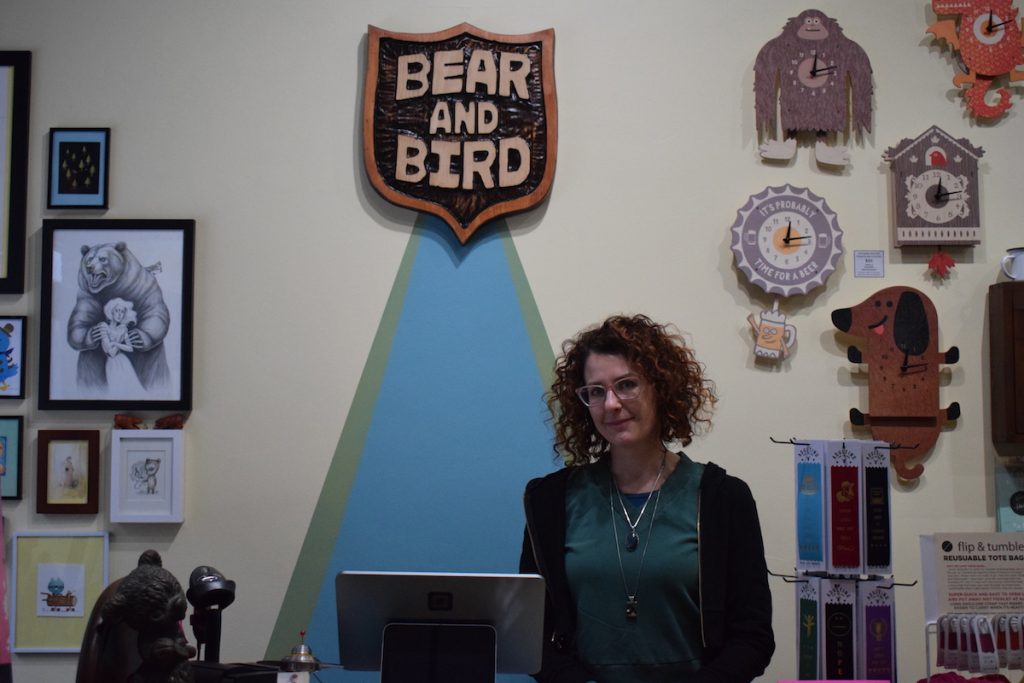
Small, local galleries such as Bear + Bird Gallery in Schenectady often feature large and unique prints for under $100 for those looking to start their collecting journey and are always looking for regional artists to fill their walls and counters.
“I really feel like everybody is a curator,” says Amanda Ottati, owner of the Schenectady gallery. “When you are collecting art, it’s very personal. I feel very strongly that your home should reflect you. That’s kind of what makes it your home and not just a hotel room. Collecting art is one way that someone can do that.”
Artist Tina Lincer, who took part in Arlene’s Artist Materials 3”x3”x3” show last year (a fundraiser for the Albany Center Gallery) made many tiny paintings for the art show, and sold them for $10 a pop.
“It was really addictive,” she says. “People could buy original art in a way that’s so accessible. I do think there is more of that in the area—these kinds of creative partnerships or fundraising initiatives—just ways to get the art to the people. It’s fun to be part of.”
Ottati reiterates that people who may not see themselves as part of the art world already invest in collecting art on a small scale, curating their spaces with subtle accessories.
“When you’re putting stickers on your water bottle, is that not your own little gallery? Or magnets on your fridge? Pins on a jacket? Even the way you dress. That’s totally acceptable. Once you’ve realized that, it becomes, ‘I can do that on a larger scale,’” Ottati says.
“I think that people are afraid of their own taste,” she adds. “Learn to trust yourself. Ask, ‘Where’s the value of having that my whole life? Why am I going to spend $30 on this?’ It just really changes the way you feel about space. It’s something you take with you.”
FROM THE ARTIST’S PERSPECTIVE

Schuylerville-based visual and installation artist Toni Nastasi was born and raised in the Capital Region and grew up in arts programs around her hometown of Saratoga. However, as a professional artist, she finds it difficult to find resources and opportunities to show work.
“I was a child within this creative culture of upstate New York, but I still feel like it’s still hard, now that I’m an adult, to get out there and justify myself as a mature artist. I think I’ve been actively trying to engage in the creative community since college,” Nastasi says about exhibiting her work in the region. She graduated from SUNY New Paltz in 2017.
“I still feel like I’m just getting to the surface and still just slowly trying to get connected. It’s something I’m still learning. I’ve been showing a little, mostly on Instagram, which is a huge part of the market, and just the culture, now.”
When it comes to pricing her commission work, which she does “here and there,” the artist has trouble finding a comfortable price range that fits the local market as well as her audience.
“It’s so tough. I think, personally, being young, I tend to price low,” Nastasi says. “On a commission level I have a lot of peers asking me for work. And then I consider they’re probably also 20-something, still stuck in this kind of social, economic bind. I do cater the price to that. There have been times that I’ve told people what I charge and they’re like, ‘Oh, my God, you should be charging so much more.’”
Nastasi recalls a 2019 pop-up gallery in Albany she took part in and felt more comfortable pricing her work higher than usual in response to the audience, which included art collectors from the city. Even then, she adds, she struggled with letting go of her pieces.
“I just don’t like the idea of producing stuff for the sake of selling it. It’s so very personal to me. Even at that pop-up, I sold a piece and I like, immediately regretted it, because I just wasn’t ready to part with it, which feels so contradictory. It’s like, ‘What are you doing then?’” she laughs. “I don’t know. I just want to make my work and have it shared and discussed.”
At this point in her creative career, the artist says exhibiting and showing her work in search of feedback and critique—a vital part of her process she misses from the university setting— are more important than selling. Nastasi works full-time as a market coordinator at the Troy nonprofit Capital Roots, so she is not using her artwork to make a living.
“It’s usually just me and my work in my studio all the time, and that doesn’t engage growth. A resource that I could really use is more connectivity or the ability to share more,” she says.
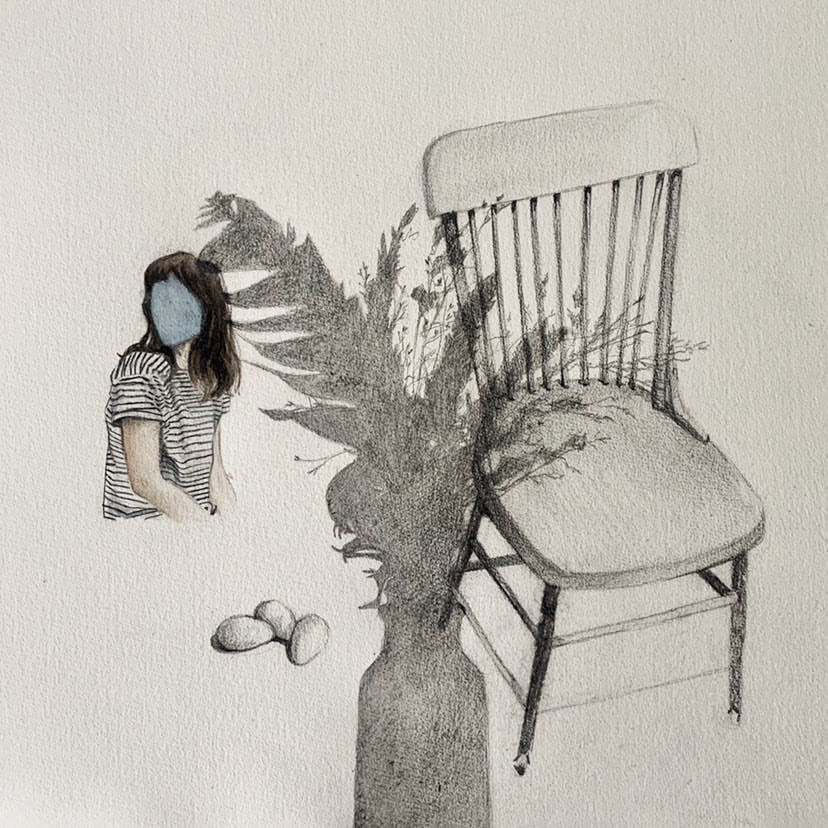
Because of this, Nastasi spends most of her time searching online regional arts sites and Instagram tags shared by artists (which she says is usually the most successful route) for residency opportunities, a resource the artist believes in for creative development. She took part in Salem Art Works’ Young Artist Program two years ago and appreciated the opportunity.
“It’s amazing, you’re in a little bubble involved with all these artists in this one location. You have free range. But that’s kind of a privilege. Luckily, they have a young artist program where you could work and stay, which I did. Otherwise, I would have probably never been able to afford it. It’s tough because there are a lot of programs around here but the strings attached with getting involved in them is kind of tricky.”
Nastasi says that some organizations do try to keep their application fees to a minimum, but $20 can be a make or break decision for young artists. This can be the same for seeking out gallery submissions.
“The whole application process of trying to get submitted and get work into these places, it’s quite a task. It’s a process in itself to do on top of working full time,” she says.
Nastasi points to the need for non-monetary investment in local arts. She sees a need for more “inclusion, connectivity and that community aspect.” She admires the DIY community ethos of the Capital Region music scene and would love to see that collective energy evolve in other artistic genres, such as the visual arts.
Like Nastasi, Lincer focuses more on creating and networking than selling.
“I’m gonna paint whether or not it gets out there, which I will try to do, or whether or not someone buys it. But then again, I do have enough canvases sitting around on the floor and on the walls,” she says.
Lincer has been exhibiting work in the local area and beyond for the past 10 years. A writer by day, the artist took to painting in the evenings to destress.

“When I amassed so many paintings after a while, it was like, ‘What am I gonna do with all these things?’ So it was sort of incremental. I started to join local arts groups in Troy and Schenectady and Albany and it literally started booming,” she says.
Lincer is a member of the Arts Center of the Capital Region in Troy, Saratoga Arts, the Albany Center Gallery and the Schenectady Art Society. This allows her to take part in each organization’s member shows as well as being clued in on specialty exhibits such as Saratoga Arts’ 10 x 10 summer show, which is open to all artists. They keep her in the loop.
“It’s really important to be in the community and go and see what other people are doing and make connections,” she says. “I have to say that being a part of the Albany Center Gallery has been tremendous. I’ve actually been working now on their fundraising gala, I think for the past four years. They do a lot of community based work in terms of bringing art out to people who don’t necessarily come to look at art, like their First Friday gallery show.”
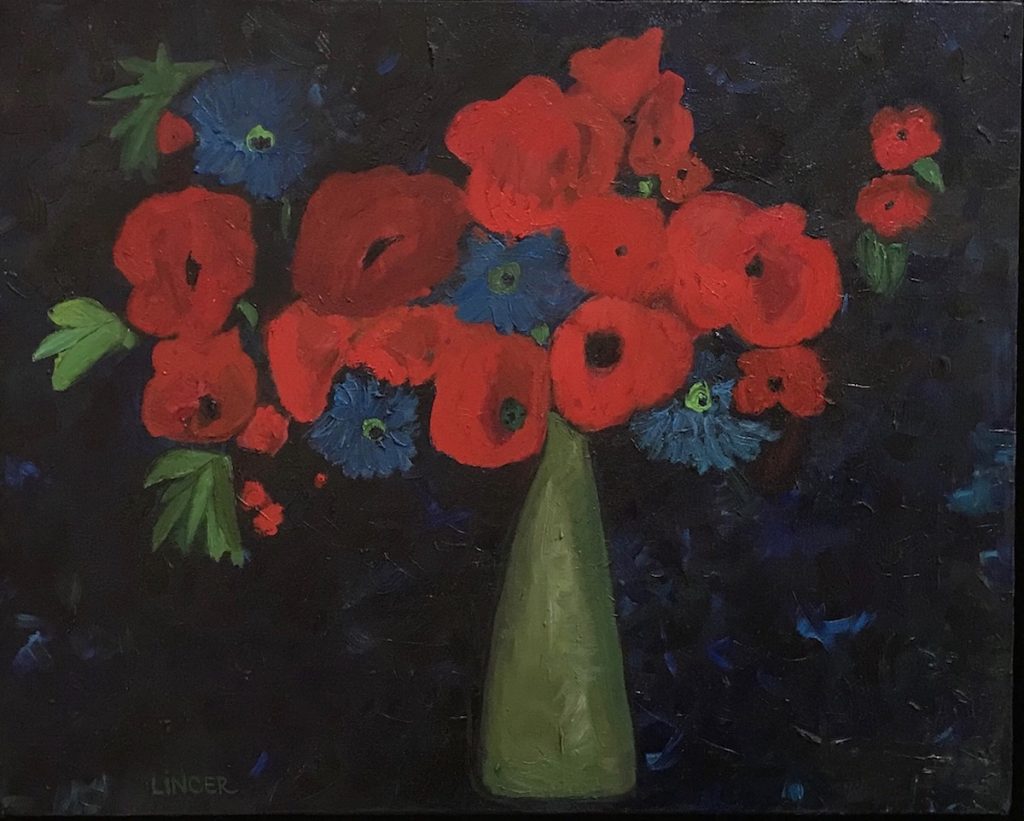
Lincer recommends taking advantage of local coffee shops or other small spaces willing to exhibit artwork. She recently showed about 20 small paintings at Albany’s 3Fish Cafe. The artist sold a few paintings at the opening reception, where she networked with other artists who had come to see the space, leading to an opportunity to show work at a photography and multimedia exhibit at the First Presbyterian Church in Albany.
“There are all these different things that pop up. I’ll put work anywhere,” she laughs. Lincer adds that she has been in awe of the odd places where she has been able to show work, such as The Living Room—a small gallery in the middle of Menands’ St. Agnes cemetery.
“In today’s world with all the technological stuff that bombards us, it’s nice to have something real, although, granted, some people are combining that in art and there are great shows for that too, but just paintings, sculptures, installations. It’s nice that people think, ‘I liked it enough to purchase it.’”

